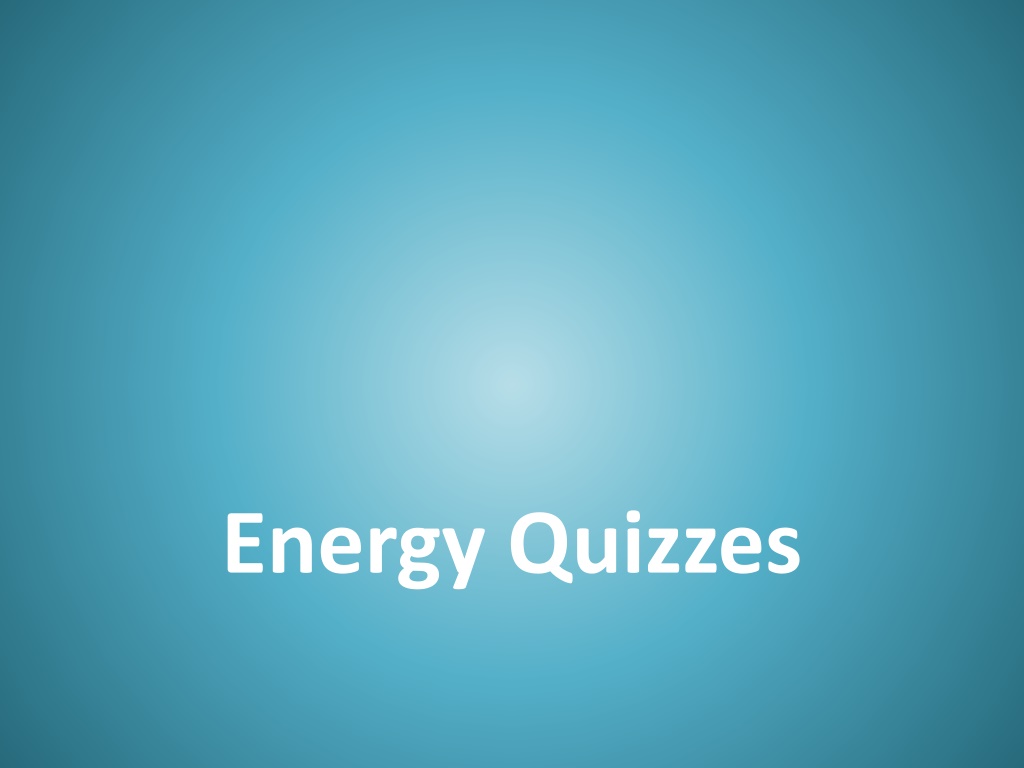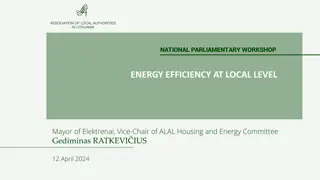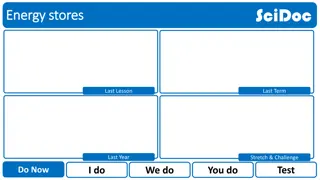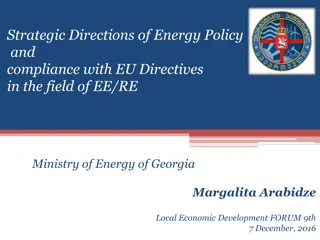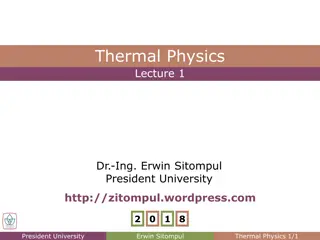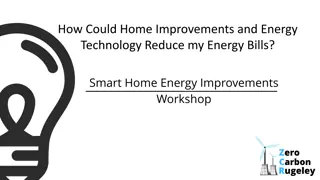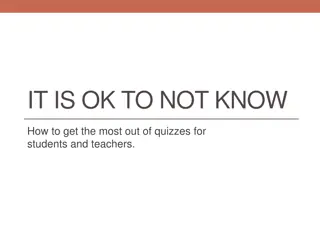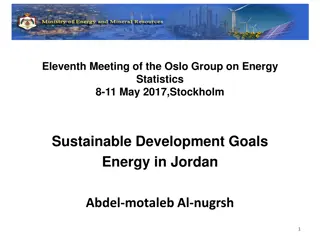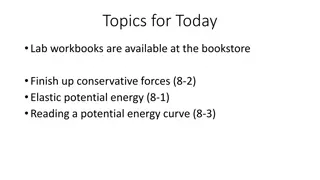Energy Quizzes
Test your knowledge on potential and kinetic energy with these interactive quizzes. Explore scenarios involving objects at rest, in motion, and from different heights to determine energy levels. Practice understanding the factors influencing energy and comparing potential energy in various systems. Get ready to enhance your grasp of energy concepts through engaging quizzes and explanations.
Download Presentation

Please find below an Image/Link to download the presentation.
The content on the website is provided AS IS for your information and personal use only. It may not be sold, licensed, or shared on other websites without obtaining consent from the author.If you encounter any issues during the download, it is possible that the publisher has removed the file from their server.
You are allowed to download the files provided on this website for personal or commercial use, subject to the condition that they are used lawfully. All files are the property of their respective owners.
The content on the website is provided AS IS for your information and personal use only. It may not be sold, licensed, or shared on other websites without obtaining consent from the author.
E N D
Presentation Transcript
1. Which system has more potential energy? Explain. 2. Which system has more kinetic energy? Explain. 3. Which system has more total energy? Explain. System 1 System 2 Cliff Cliff
1. Which system has more potential energy? Explain. 2. Which system has more kinetic energy? Explain. 3. Which system has more total energy? Explain. System 1 System 2 Started from the cliff Cliff Cliff
1. Which system has more potential energy? Explain. 2. Which system has more kinetic energy? Explain. 3. Which system has more total energy? Explain. System 1 System 2 V 0 Cliff Cliff
Pop Quiz: What Is Energy? 1. If I double the mass of an object, what happens to the amount of energy? 2. If I triple the height from which an object is dropped, what happens to the amount of energy? 3. If I double the velocity an object moves, what happens to the amount of energy?
Pop Quiz 1. What factors influence energy? 2. Which has more potential energy: Spring 1 10 lbs Spring 2 100 lbs
Answer Key (Correct answers in red)
1. Which system has more potential energy? Explain. 2. Which system has more kinetic energy? Explain. 3. Which system has more total energy? Explain. 1. System 2 has more potential energy. Both boulders are the same mass, and are not moving, therefore they have the same velocity. System 2 System 1 has a boulder at a higher height, thus it has more potential energy. 2. Both systems have the same amount of kinetic energy. Both boulders are on the cliff and at rest, therefore their velocity is 0. As such, they have the same kinetic energy. 3. System 2. The total energy of a system is given by its potential energy and kinetic energy. Since both systems have the same kinetic energy, the system with the greatest potential energy has greater total energy. System 2 Cliff Cliff
1. Which system has more potential energy? Explain. 2. Which system has more kinetic energy? Explain. 3. Which system has more total energy? Explain. 1. System 2 has more potential energy. Both boulders are the same mass. While system 1 has a boulder that is moving, an object s speed does not affect its potential energy. System 2 has a boulder at a higher height, System 1 and so therefore has more potential energy. 2. System 1 has more kinetic energy. Only system 2 has a boulder on the cliff and at rest, therefore its velocity is 0 while system 1 has a moving object. As such, they have the same kinetic energy. 3. Both systems have the same amount of energy. The total energy of a system is given by its potential energy and kinetic energy. Since the boulder in system 1 started at rest from the same height as system 2, the systems must have the same amount of energy since energy cannot be System 2 Started from the cliff Cliff created or destroyed. Cliff
1. Which system has more potential energy? Explain. 2. Which system has more kinetic energy? Explain. 3. Which system has more total energy? Explain. 1. Systems 1 and 2 have the same amount of energy. Both systems have boulders that are the same mass and at the same height. The velocity of System 1 an object does not affect its potential energy. 2. System 1 has more kinetic energy. System 2 has a boulder at rest (no kinetic energy; only potential energy), while system 1 has a boulder that is moving. Therefore, system 2 has more kinetic energy. 3. System 1. The total energy of a system is given by its potential energy and kinetic energy. Since both systems have the same potential energy, the system with the greatest amount of kinetic energy has greater total energy. System 2 V 0 Cliff Cliff
Pop Quiz: What Is Energy? 1. If I double the mass of an object, what happens to the amount of energy? The amount of energy doubles. E = m * g * h 2. If I triple the height from which an object is dropped, what happens to the amount of energy? The amount of energy triples. E = m * g * h 3. If I double the velocity an object moves, what happens to the amount of energy? The amount of energy quadruples. E = m * v2
Pop Quiz 1. What factors influence energy? height, mass, velocity 2. Which has more potential energy: Spring 2. Spring 2 has a mass that weighs more and so is pushing the spring down a greater distance. In this instance, the spring is what stores the potential energy. Spring 1 10 lbs Spring 2 100 lbs
